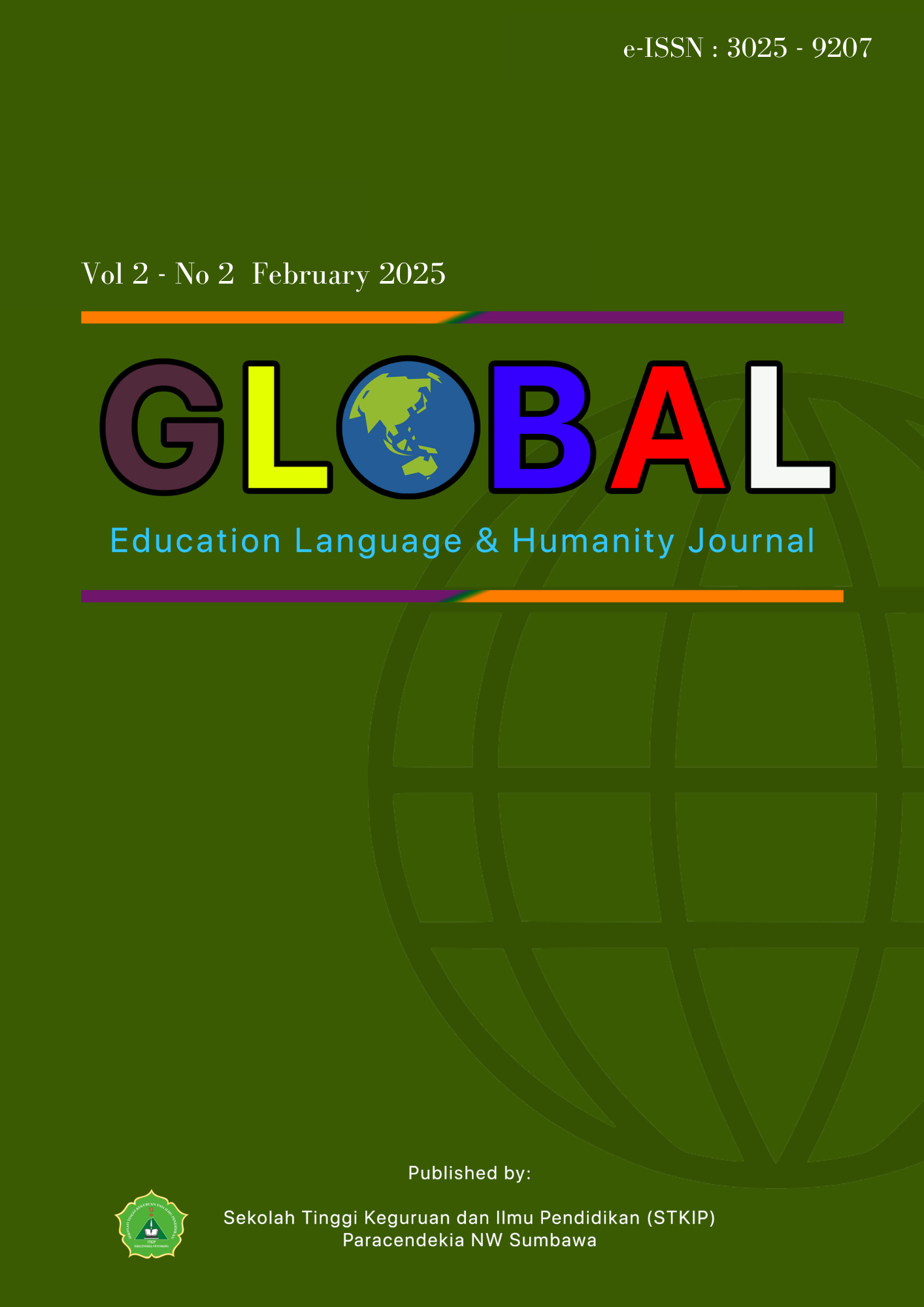ENVIRONMENTAL VALUES IN THE POETRY ANTHOLOGY MATA SUKMA, MATA CINTA BY DINULLAH RAYES: AN ECOCRITICAL ANALYSIS
Keywords:
Environmental Values, Indonesian Poetry, Poetic Diction, Literary Ecology, EcocriticismAbstract
This study investigates the representation of environmental values in the poetry anthology Mata Sukma, Mata Cinta by Dinullah Rayes through a qualitative ecocritical lens. Ecocriticism, which explores the interplay between literature and the environment, provides a framework for examining how poetic diction reflects ecological consciousness. The research employs a descriptive qualitative approach, analyzing 147 environment-related words that appear frequently (≥5 occurrences) across the anthology. These dictions are categorized into three environmental domains: land (e.g., pohon, batu), water (e.g., laut, air, muara), and air/outer space (e.g., bulan, bintang). Findings reveal that the selected lexical items function not only in literal contexts but also convey metaphorical, symbolic, and emotive associations with nature. This duality suggests a layered ecological awareness embedded in the poetic language. The study contributes to the growing discourse on literary ecocriticism in Indonesian literature, offering insights into how poetry can cultivate environmental sensitivity.
References
Candra, A. A. (2017). Ekokritik dalam cerpen Indonesia mutakhir. Jurnal Pena Indonesia, 3(2), 100–129. https://doi.org/10.26740/jpi.v3n2.p100-129
Khosravi, G. D., Sistani, R. R., Raihanah, M. M., & Vengadasamy, R. (2022). Eco-mysticism in Pablo Neruda’s selected poetry. 3L: Language, Linguistics, Literature, 28(3), 262-281. https://doi.org/10.17576/3l-2022-2803-17
Knickerbocker, S. (2012). Ecopoetics: The Language of Nature, the Nature of Language. Amherst: University of Massachusetts Press. https://muse.jhu.edu/book/19472
Murti, F. N. (2019). Indonesia’s green literature: “The sleeping beauty” literary. IOP Conference Series: Earth and Environmental Science, 243(1), 012165. https://doi.org/10.1088/1755-1315/243/1/012165
Nasekha, A. D., & Mulyana, M. (2024). Ecocritical study on the “Sendhang Tirta Panggesangan” geguritan. Lingua, 19(1), 36-45. https://doi.org/10.18860/ling.v19i1.24073
Oppermann, S. (1999). Ecocriticism: natural world in the literary viewfinder. Hacettepe Üniversitesi Edebiyat Fakültesi Dergisi, 16(2), 29-46. https://dergipark.org.tr/tr/download/article-file/596975
Rayes, D. (2019). Mata Sukma, Mata Cinta. Buana Grafika.
Rizam, M. M., & Ayuanita, K. (2024). Kajian ekologi cerpen digital berbasis web dan implementasinya dalam pembelajaran bahasa dan sastra. Ghancaran, 5(2), 451-462 . https://doi.org/10.19105/ghancaran.vi.17362
Rohman, S. (2015). Story of big flood in the modern Indonesian literary: An ecocriticism study. International Journal of Language Education and Cultural Review, 1(1), 105–112. https://doi.org/10.21009/IJLECR.011.11
Ryan, J. S. (2017). Plants in Contemporary Poetry: Ecocriticism and the Botanical Imagination. Routledge. https://doi.org/10.4324/9781315643953
Sikuku, M. (2024). Ecocriticism and environmental awareness in modern poetry in Africa. American Journal of Literature Studies, 3(2), 1-12. https://doi.org/10.47672/ajls.2313
Sugiyono. (2017). Metode penelitian kuantitatif, kualitatif, dan R&D. Alfabeta.
Waithiru, A. K. (2022). Symbols of the sentient House of Usher: An ecocritic approach. East African Journal of Education Studies, 5(2), 369-376. https://doi.org/10.37284/eajes.5.2.812









